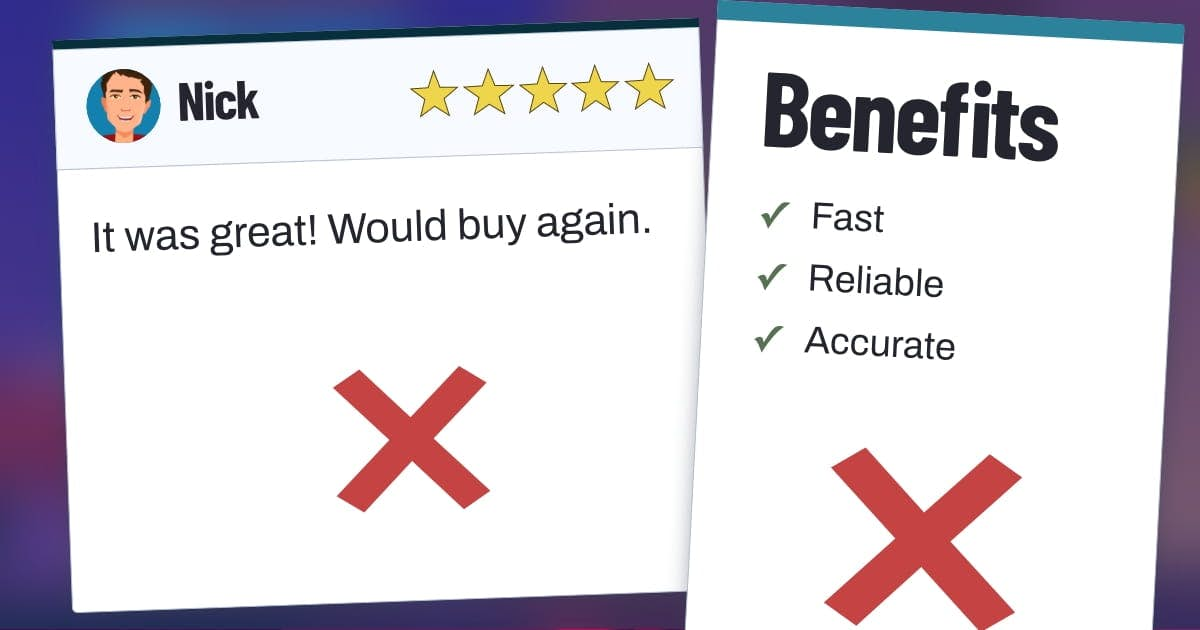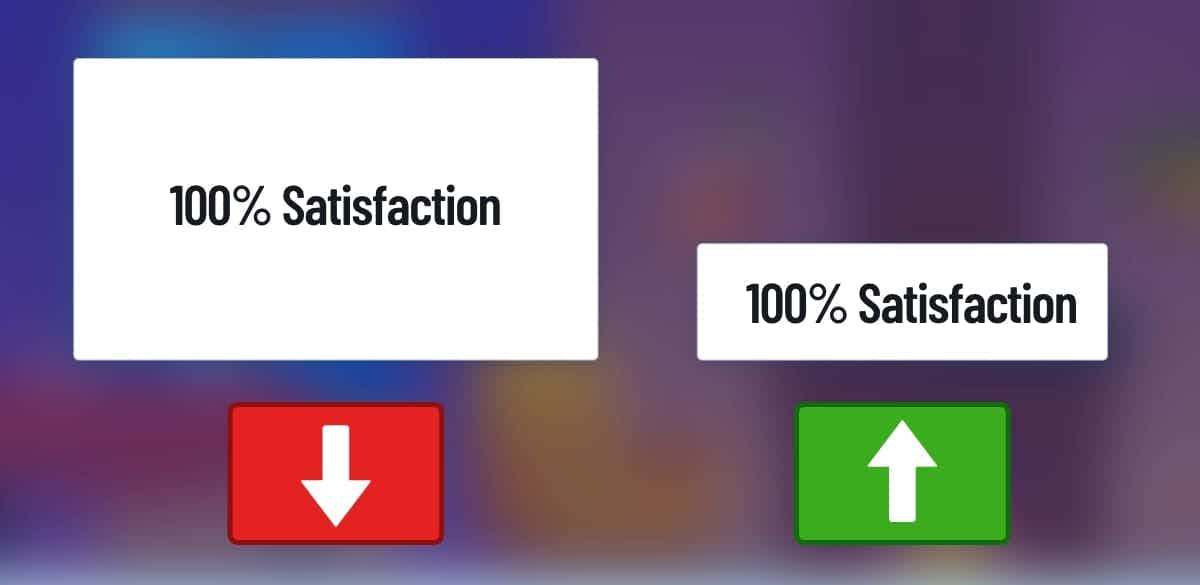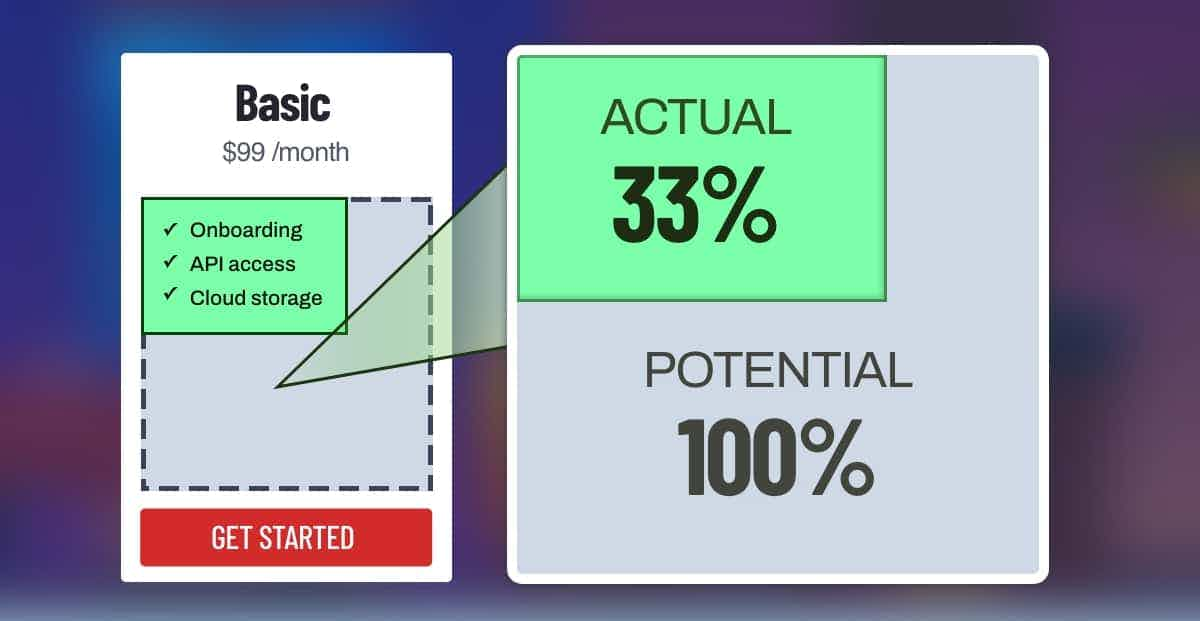Insight of the Week
Remove Empty Space Below Sales Copy
Messages are less persuasive when they're surrounded by empty space, especially toward the bottom.
Last updated September 22, 2023

Overview
Be careful with empty space.
Even though it can optimize visual layouts, it can also reduce persuasion.
Across 7 studies, messages were less persuasive when they were surrounded by empty space (Kwan, Dai, & Wyer, 2017).

Empty space is most harmful below arguments. Readers infer that you were unable to fill this space with additional reasons, so your message seems less credible.
"a communicator who intends to convey a strong opinion is likely to use all of the space available to elaborate his or her position, whereas a communicator who is less confident... may leave space unused." (Kwan, Dai, & Wyer Jr, 2017, p. 450)
Plus, it triggers an anchoring effect. Your benefits might "feel smaller" if they consume a small fraction of available space.

Try shrinking this canvas so that customers receive 100% of potential benefits.
Other New Stuff
- Customers Feel Left Behind With Product Upgrades - Apple just launched iPhone 15. If you bought iPhone 14 (like me), you might feel distant. Research shows that new versions are detrimental to owners of the previous version, reducing their likelihood of buying the brand in the future. Brands need to reinforce their relationship with these customers (e.g., special promotion; Jung, Peck, Palmeira, & Kim, 2022).
- We Sell Anthropomorphic Products at Higher Prices - Some products resemble humans (e.g., toaster with eyes). We develop stronger relationships with these products, so it's harder to discard them. We typically sell them for higher prices (Kim & Swaminathan, 2021).
- Voice-Based Recommendations Are More Persuasive - People received a restaurant suggestion from their device. They were more persuaded when they heard it from Alexa or Siri, compared to reading this text on the screen (Flavián, Akdim, & Casaló, 2023).